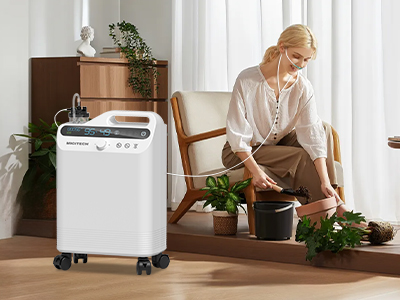18 Aug 2025
Buying an oxygen concentrator isn’t quite like choosing a new toaster. There are real stakes here—literally breath-taking ones. The 5-liter and 10-liter machines are the most common contenders, each offering its own mix of portability, power, and peculiar quirks. The decision rests not just on numbers but on your lifestyle, health requirements, and tolerance for background hum.

Understanding the Basics: Liters per Minute
The “L” in 5L or 10L stands for liters per minute (LPM), which is how much oxygen the concentrator can deliver. Think of it as a faucet:
A 5L concentrator offers a steady but moderate stream. Perfect for those who need a smaller, continuous supply.
A 10L concentrator is like opening the faucet full blast—ideal for users with higher oxygen demands or more complex conditions.
Neither is better in isolation. It’s about matching the flow to the body, not the body to the machine.
Who Might Need a 5L Concentrator?
For many, the 5L concentrator is the sweet spot.
Moderate oxygen therapy users who require 1–5 liters per minute find it sufficient.
Home-friendly—smaller, lighter, and less noisy than its bigger sibling.
Energy-conscious—it sips electricity rather than guzzling it.
If your oxygen prescription stays within this range, a 5L concentrator won’t just meet your needs—it’ll keep your living room from resembling a small power plant.

Who Might Need a 10L Concentrator?
The 10L concentrator is for the heavy lifters.
High oxygen flow requirements—conditions such as COPD in advanced stages or pulmonary fibrosis may demand more.
Dual users—some models can serve two patients at once (yes, a concentrator with multitasking skills).
Future-proofing—if your condition is progressive, investing in higher capacity could prevent another costly purchase down the road.
The trade-off? It’s bulkier, noisier, and hungrier for electricity. But when your body craves more oxygen, compromise isn’t an option.
Portability vs. Power
Imagine choosing between a nimble scooter and a rumbling pickup truck.
A 5L concentrator is easier to move, tuck into corners, and integrate into daily life.
A 10L concentrator, however, stays put. Think of it as the heavyweight champ—powerful but not the kind to casually stroll through the house with you.
Travelers and minimalists often lean toward the 5L. Those with high-flow prescriptions embrace the 10L, resigned yet grateful for its formidable output.
Energy Consumption and Noise Considerations
Nobody likes a utility bill that looks like a ransom note.
5L concentrators typically run quieter and consume less electricity—pleasant for the wallet and the ears.
10L concentrators can be noticeably louder and pricier to operate, though technology is improving in this area.
If you’re sensitive to noise, or if your concentrator will hum away near your bedroom, this difference isn’t trivial. Sleep is precious, and nothing ruins dreams like a mechanical growl at midnight.
Cost and Longevity
While 5L concentrators are more affordable upfront, a 10L machine may save money long-term if your oxygen needs increase. Buying twice isn’t just costly—it’s frustrating. Longevity also depends on brand, maintenance, and proper usage. Machines don’t like being overworked, and the right match means less strain on both you and the device.
How to Decide: The Checklist
Check your prescription—the flow rate isn’t a guess; it’s a medical directive.
Think about your lifestyle—active and mobile, or home-based and stable?
Consider the future—are your oxygen needs likely to increase?
Factor in budget and operating costs—machines live longer when cared for, but power bills are forever.
When in doubt, clarity from a healthcare provider can prevent expensive trial-and-error shopping.
Keywords: Oxygen Concentrator
Originally published 18 Aug 2025, updated 18 Aug 2025.